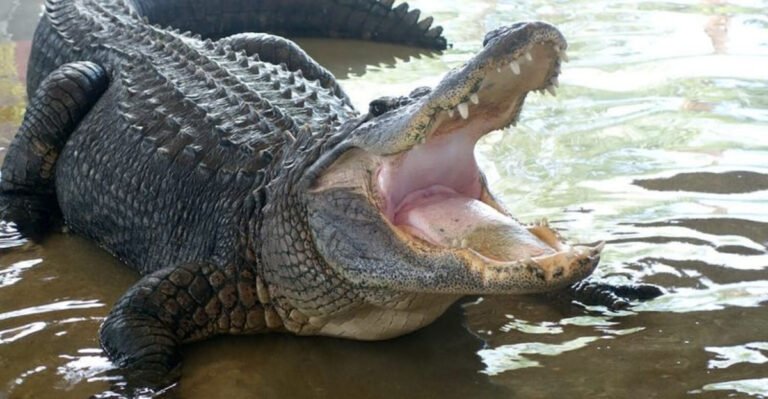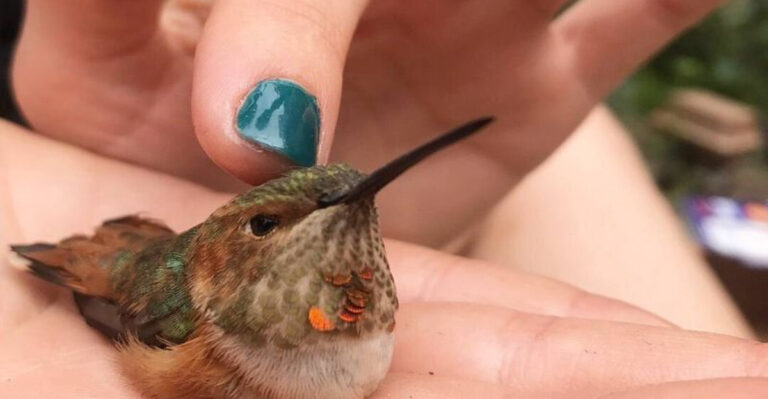House Finch Vs Purple Finch: 9 Key Differences Explained
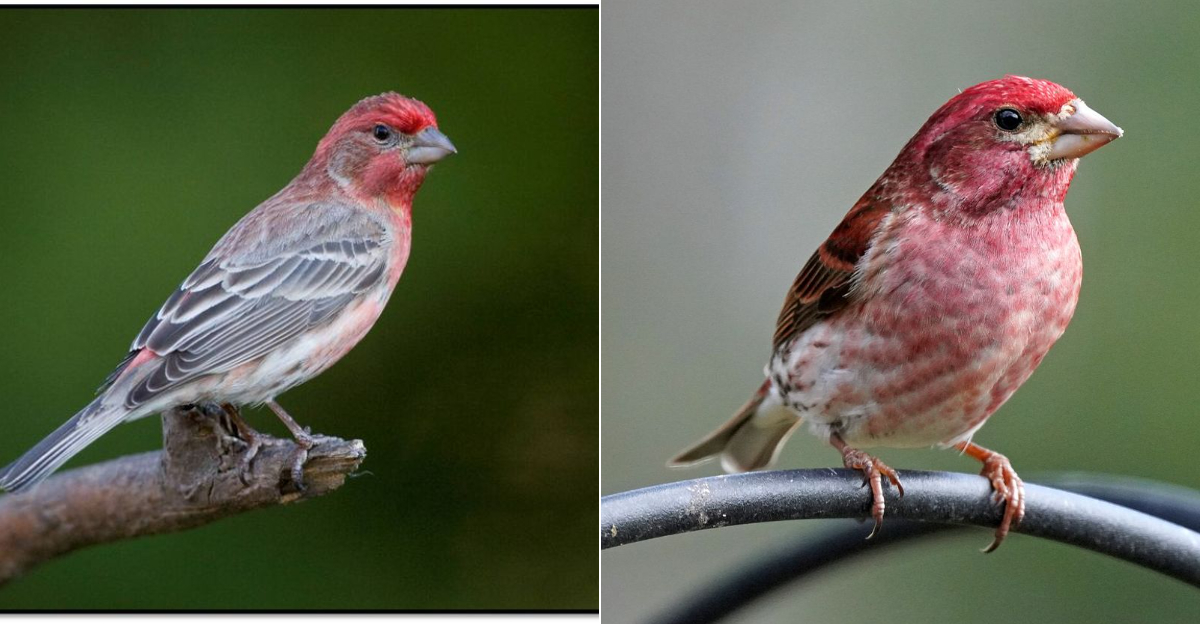
Welcome to the vibrant world of finches! These delightful birds, the House Finch and the Purple Finch, are a feast for the eyes and ears.
They may seem similar at first glance, but each boasts unique features that set them apart.
This list dives into their fascinating differences, illuminating the characteristics that make each species special. Prepare to be enchanted as we explore the distinctive traits of these charming creatures!
1. Plumage Color
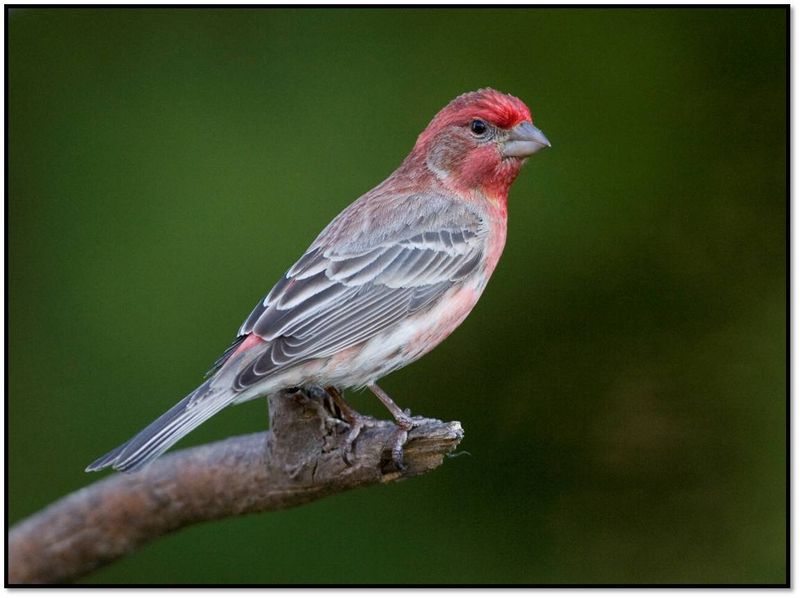
The first striking difference between these two finch species lies in their plumage. The male House Finch is adorned with vibrant red feathers around its head and chest, often interspersed with brown streaks. In contrast, the male Purple Finch boasts a more uniform raspberry hue across its body, giving it a washed-out look. These colors serve not only as a visual delight but also as a means for identification.
In the avian world, the males’ vivid colors play a crucial role during the mating season, helping attract females. The House Finch’s red plumage can vary depending on its diet, often taking on deeper shades when nourished by carotenoid-rich foods. Conversely, the Purple Finch’s color remains consistent, unaffected by diet, making it a reliable identifier throughout the year.
The females of both species are more subdued in color but possess their own charm with streaky brown plumage. This subtlety helps them stay camouflaged in their habitats.
2. Body Size And Shape
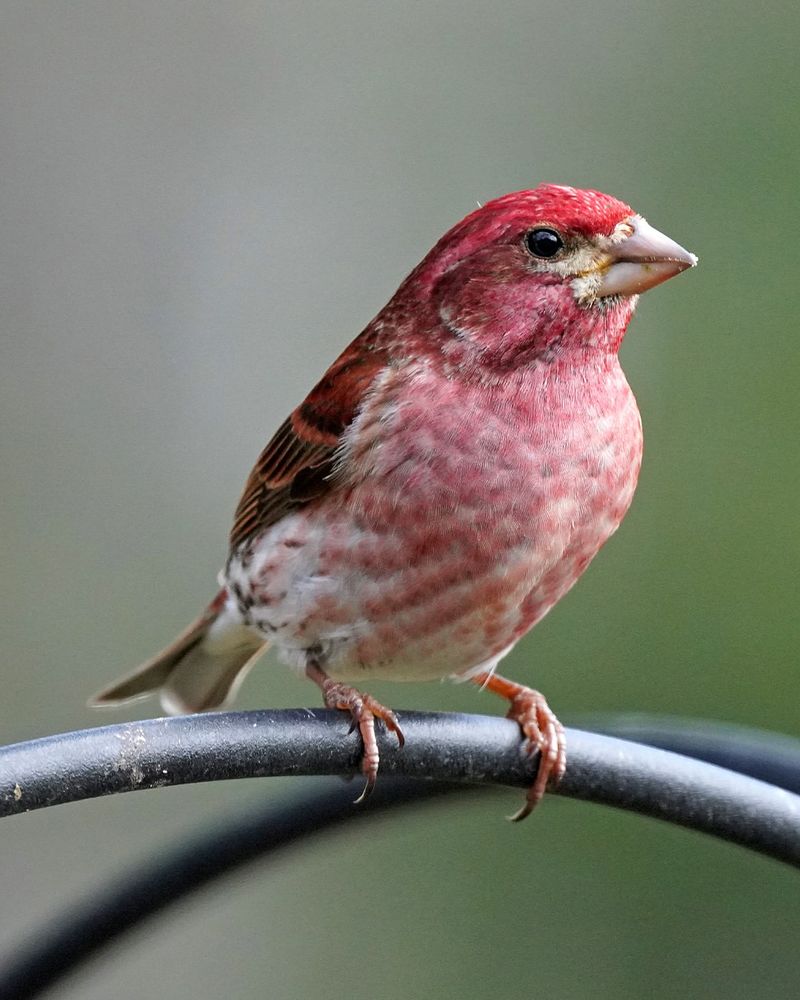
When it comes to size and posture, the House Finch and Purple Finch exhibit noticeable differences. The House Finch tends to be more slender with a longer tail, giving it a graceful appearance. In contrast, the Purple Finch is slightly stockier, with a more compact build that exudes strength.
These physical traits aren’t just for show. They influence how each bird behaves in its environment. The House Finch’s streamlined body allows for swift flight and agile movements, ideal for navigating urban landscapes and dense foliage. Meanwhile, the Purple Finch’s robust form is well-suited for foraging in wooded areas, where it often contends with thicker branches and rough terrain.
Understanding these size and shape differences can aid bird watchers in accurately identifying these finches in the wild, enhancing the birding experience and appreciation of these unique species.
3. Bill Shape And Size
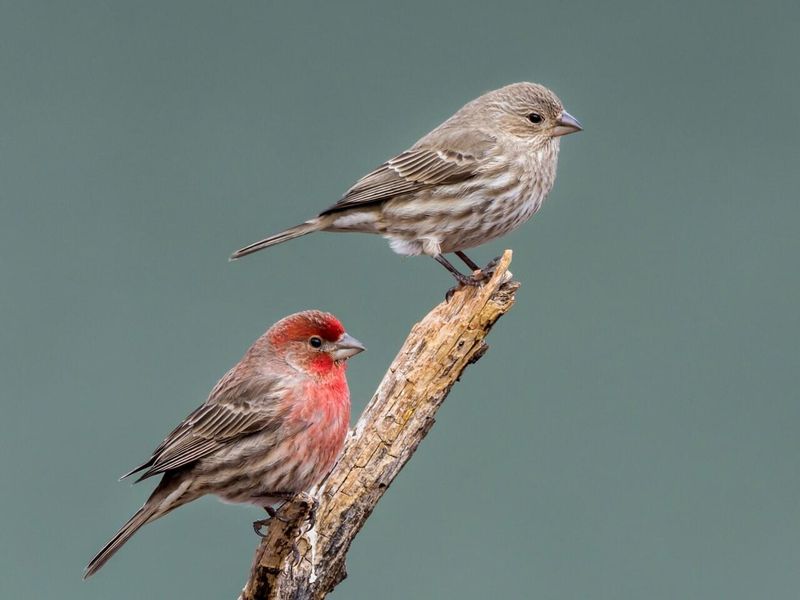
A bird’s bill is a critical tool for survival, and finches are no exception. The House Finch sports a slender, slightly curved bill, perfect for its varied diet, which includes seeds, fruits, and insects. This shape allows it to deftly handle a wide range of foods, making the House Finch a versatile forager.
In contrast, the Purple Finch is equipped with a thicker, more conical bill. This robust tool is particularly adept at cracking open tougher seeds, such as sunflower seeds and hard-shelled nuts. The Purple Finch’s bill shape reflects its dietary specialization and preference for harder food sources.
These differences in bill shape and size are evolutionary adaptations that have enabled each species to thrive in its respective niche. Bird enthusiasts can look to these distinguishing features as key identification markers when observing these finches in their natural habitats.
4. Song And Vocalization
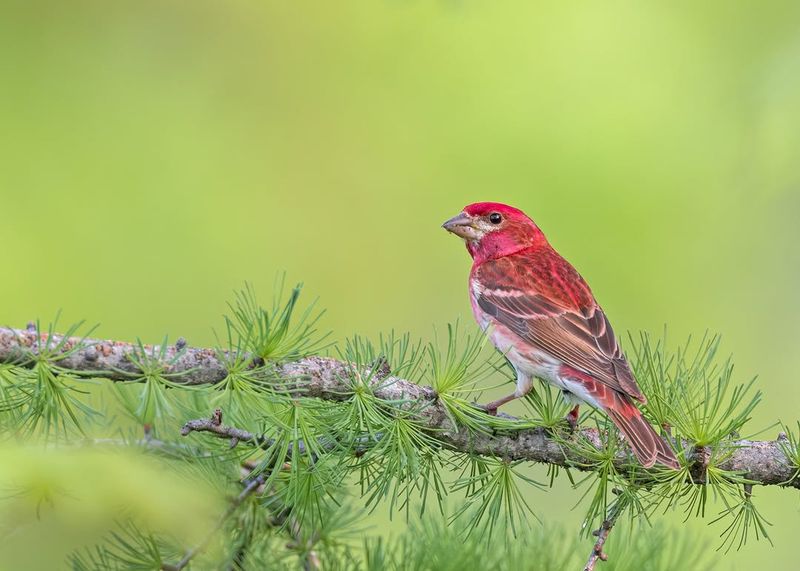
The voices of the House Finch and the Purple Finch add a delightful soundtrack to their respective environments. The House Finch is renowned for its cheerful, warbling song, a combination of short notes and trills that fills the air with vibrant energy. This vocalization is often heard in urban areas, where House Finches are commonly found.
On the other hand, the Purple Finch is celebrated for its rich, melodious song. Its tune comprises a series of rolling notes that are both complex and captivating. This song can often be heard in more wooded habitats, adding a serene auditory layer to peaceful forest settings.
These distinctive vocalizations not only provide identification clues for birders but also enhance the natural ambiance of their surroundings. Listening for these unique songs can be an enriching experience, offering insights into the lives and behaviors of these fascinating birds.
5. Habitat Preferences
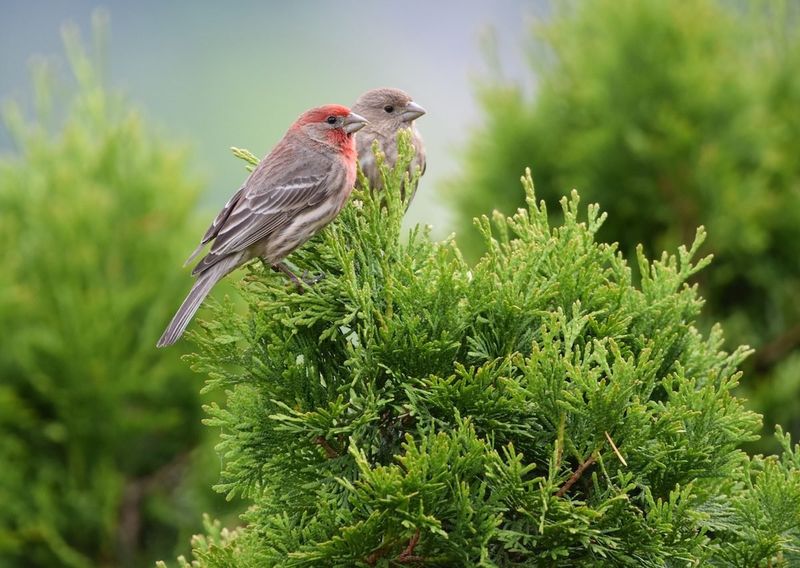
The habitat preferences of the House Finch and the Purple Finch reveal much about their lifestyles. House Finches are highly adaptable and often found in urban areas, suburban gardens, and even agricultural lands. Their presence in human-populated areas highlights their ability to thrive alongside us, making them a common sight across cities and towns.
In contrast, the Purple Finch favors more natural, wooded environments. These birds are commonly found in coniferous and mixed forests, where they can enjoy the solitude and resources these habitats provide. This preference underscores their more reclusive nature compared to the gregarious House Finches.
Understanding these habitat choices is crucial for bird watchers aiming to spot these finches in the wild. By recognizing where each species prefers to live, enthusiasts can better plan their birding outings, increasing their chances of encountering these charming birds.
6. Dietary Habits
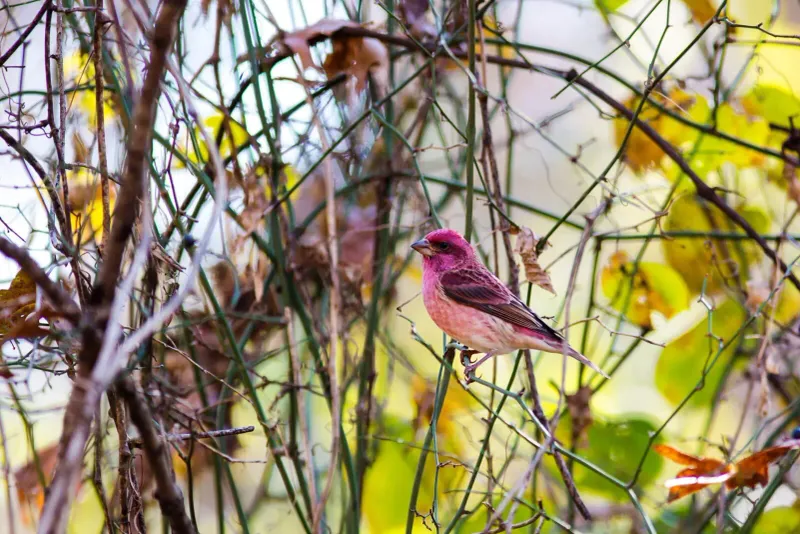
The dietary habits of the House Finch and the Purple Finch reveal fascinating insights into their ecological roles. House Finches have a versatile diet, consuming a wide range of seeds, fruits, and insects. This adaptability allows them to flourish in diverse environments, from bustling cities to serene countryside.
In contrast, the Purple Finch has a more specialized diet, primarily focusing on seeds, especially from coniferous trees, and hard-shelled nuts. This preference reflects the Purple Finch’s adaptation to forested habitats, where these food sources are abundant.
These dietary differences not only affect their feeding behaviors but also their interactions within their ecosystems. By understanding these habits, bird enthusiasts can gain a deeper appreciation for how each finch species fits into the broader tapestry of their natural world.
7. Social Behavior
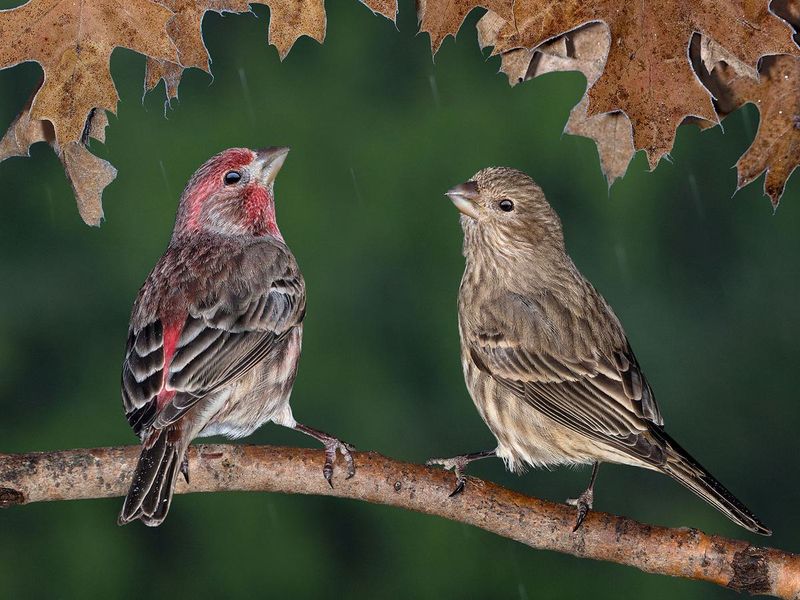
Social interactions among birds can be as varied as their plumage, and this holds true for the House Finch and the Purple Finch. House Finches are notably social, often forming large, lively flocks. These gatherings are a common sight in gardens and parks, where their social nature is on full display.
In contrast, Purple Finches are more solitary or found in smaller groups. Their preference for quieter, less crowded environments aligns with their reclusive tendencies. This difference in social behavior is reflective of their respective lifestyles and habitat choices.
Understanding these social dynamics adds another layer to bird watching. Observing how these finches interact with one another can offer valuable insights into their social structures and behaviors, enriching the overall birding experience.
8. Migration Patterns
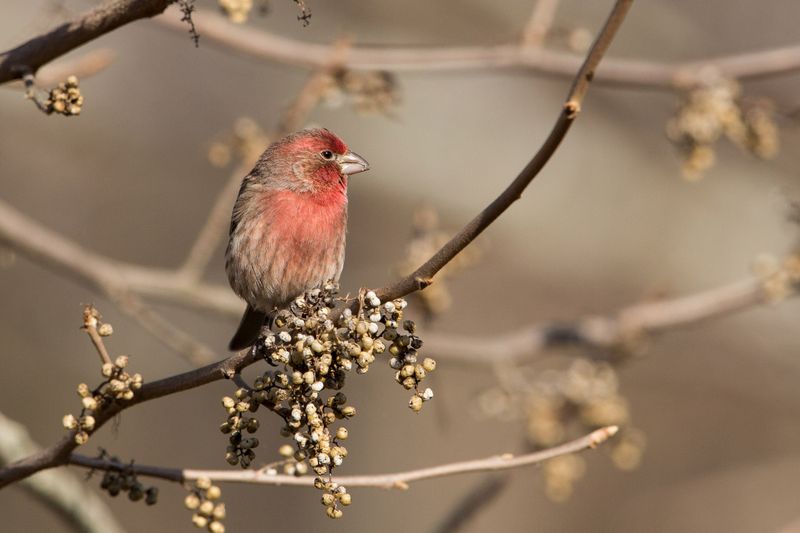
Migration is a fascinating aspect of bird behavior, and the House Finch and Purple Finch exhibit distinct patterns. House Finches are largely sedentary, often remaining in the same area year-round, which reflects their adaptability to various environments, including urban settings.
In contrast, Purple Finches are known for their seasonal migrations. They travel substantial distances between breeding grounds in the northern forests and wintering sites further south. This migratory behavior is influenced by food availability and climate conditions, showcasing their adaptability to seasonal changes.
Bird enthusiasts can learn much from these migration patterns, which highlight the resilience and adaptability of these birds. By tracking these movements, bird watchers can better understand the environmental factors that drive migration and the challenges these birds face during their journeys.
9. Conservation Status
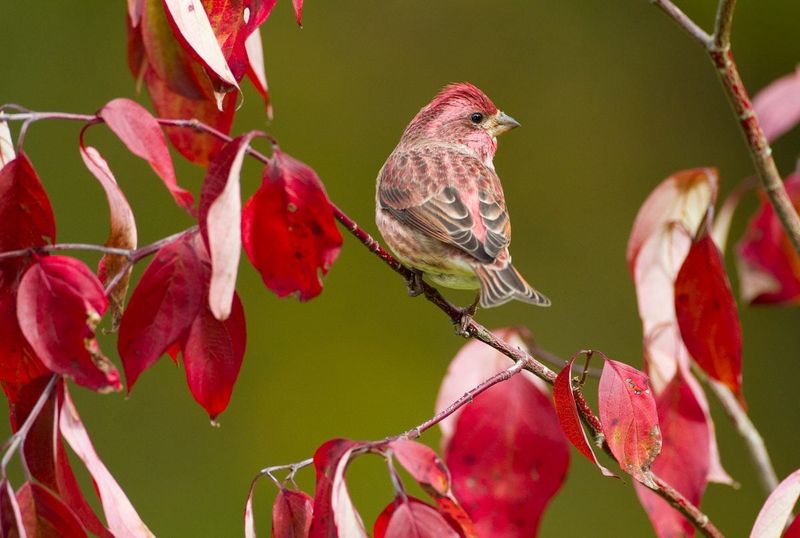
Conservation efforts for the House Finch and Purple Finch are crucial to ensure their continued presence in our ecosystems. House Finches, due to their adaptability, are classified as “Least Concern,” thriving in a variety of environments, including urban areas.
However, the Purple Finch faces more challenges. Its reliance on specific forest habitats makes it more vulnerable to habitat loss and environmental changes. As a result, conservationists emphasize the importance of preserving these natural areas to ensure the Purple Finch’s survival.
Understanding the conservation status of these finches highlights the broader environmental issues they face. Bird enthusiasts and conservationists alike can support efforts to protect these species by advocating for habitat preservation and engaging in citizen science projects to monitor their populations.



